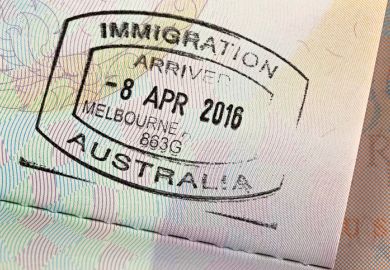Sluggish growth in a key chain of pathway colleges could add to anxieties about the future of Australia’s international education industry.
Enrolment growth at Navitas’ pathway colleges in Australia and New Zealand has slowed to 4 per cent in the first semester of 2018, down from 14 per cent in the equivalent period last year.
While Navitas has blamed unfair visa arrangements, its lukewarm performance adds to signs that Australia’s education exports – an increasingly crucial revenue stream for the nation’s universities – may be headed for a slowdown.
Navitas has partnerships with 10 universities in Australia and one in New Zealand. Its programmes are designed to boost students’ language and academic skills, with successful graduates transferring into the second year of university degrees.
These programmes are available to domestic students but dominated by foreigners. Navitas said enrolment growth had slowed because changes to Australian visa processing had “contributed towards a bias”.
It said international students were favouring universities that received preferential treatment under the new visa processing scheme, known as the Simplified Student Visa Framework (SSVF). “We are actively working to support a rebalancing of the SSVF to enhance the sustainability of Australia’s international education sector,” Navitas chief executive David Buckingham said in a statement.
It is not clear why Navitas thinks the SSVF, which began almost two years ago, is affecting the company’s activities now. Until recently its Australian operations had enjoyed a “sustained period of solid enrolment growth”, including an 18 per cent increase at Australian and New Zealand colleges in the third semester last year.
International enrolments in Australia have ballooned following a downturn at the end of last decade. But tensions with China have triggered fears of a downturn – a potential disaster particularly for research-intensive universities which rely heavily on income from Chinese students.
At first glance, the latest international student figures from Australia’s Education Department suggest such concerns are misplaced, with almost 90,000 Chinese higher education students enrolled in January – 16 per cent more than in January last year – and overall foreign student numbers up by 11 per cent.
But worryingly, January saw a 3 per cent fall in the number of new students at English colleges, compared to the beginning of last year. Language commencements offer a preview of what is in store for other sectors, because many students begin their studies by improving their English.
While English language commencements have risen from China and the key Latin American markets of Brazil and Colombia, they have fallen steeply from key south-east Asian countries such as Thailand, Vietnam, Japan and Taiwan.
The number of commencing Chinese students in “non-award” programmes – foundation courses, student exchanges and short study abroad stints – also fell by 18 per cent in January, compared to the same month last year.
Overall, the figures give an ambiguous picture of foreign student inflows this year. While the number of visas granted to Chinese students has continued to increase, Department of Home Affairs statistics show that the growth is mostly among Chinese people who are already in Australia.
Register to continue
Why register?
- Registration is free and only takes a moment
- Once registered, you can read 3 articles a month
- Sign up for our newsletter
Subscribe
Or subscribe for unlimited access to:
- Unlimited access to news, views, insights & reviews
- Digital editions
- Digital access to THE’s university and college rankings analysis
Already registered or a current subscriber?








